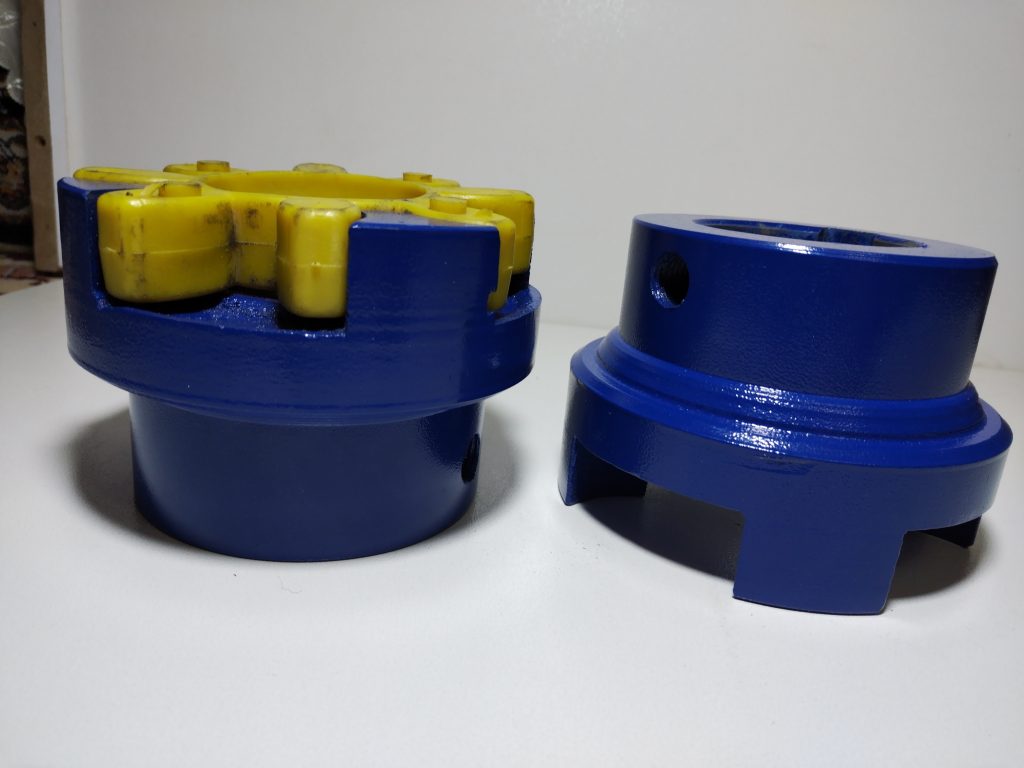1- Flanged coupling with plastic bushing
The plastic bushing flange coupling is an upgraded version of the non-flexible flange. The difference between these two is the use of plastic bushings, which makes them flexible. The design of the rubber bushings is such that the bolts and nuts are completely placed inside the model. The main advantage of using them is that it can be used for shafts that have non-parallel axes. The use of plastic bushings absorbs shock and vibration.
The application of the flange model with plastic bushing is in cases where there is a small amount of angular or axial deviation between two shafts. It is also widely used in electric motors and various industrial machines.
2- gear coupling
The gear coupling is another modified and advanced version of the flange model. In this model, flange and hub are different parts that are assembled together as a single piece. The hubs are twisted on the outside, but they are so thick and deep that you can think of them as ribs. Also, flanges have internal teeth. The gear model is used for heavy industrial applications that require high torque transmission.
3- Universal coupling
Flexible universal coupling is suitable for connecting two shafts that are connected at an angle. It also has a pair of closely spaced and perpendicular hinges, connected by cross shafts. Even when the joint of two shafts has a large angle, it can transmit torque with great power. This model can be used when space is limited or high flexibility is required.
4- Flexible disc
In disc couplings, a metal disc is placed between two flanges. The remarkable thing about this style is that half of the screws connect the driving shaft, and half of the screws from the opposite side connect the driving shaft to the coupling; In this way, the necessary flexibility is created when the two shafts move. They have a very high useful life and twisting hardness. Other flexible couplings include Omega, rod, spiral, jaw, etc.
The price of flexible couplings
As you have seen, there are different types of flexible couplings, each of which has its own characteristics. In general, compared to hard models, it can be said that the price of flexible couplings is usually higher. To get more information, as well as to get the price of the flexible type and buy them, you can contact the experts of Industrial Automation Group of Lain Hamak.
Deciding on the most suitable type for your needs requires considering various factors. The torque and output of the driving shaft, the positional accuracy of the shaft, the severity of incompatibility between the two shafts, vibration, etc. are some of these factors. We hope that by reading this article, you will be able to use the appropriate criteria for choosing and purchasing a coupling.







